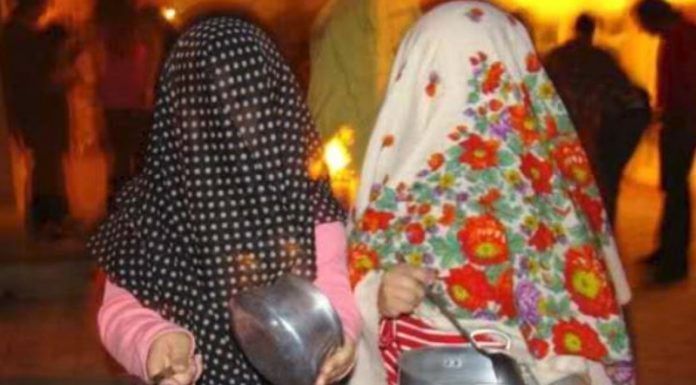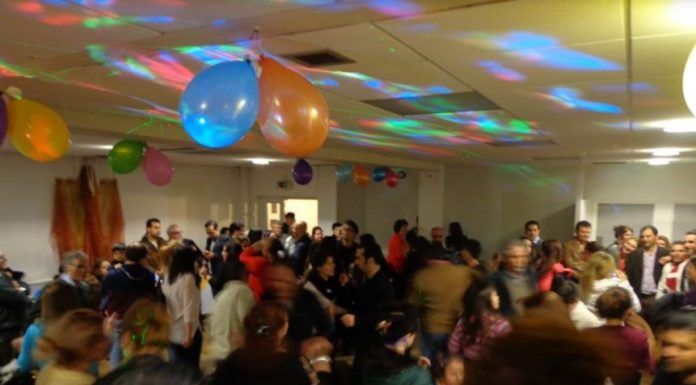At sunset on Tuesday, millions of Iranians around the world will light bonfires and jump over them as they celebrate Chaharshanbe Suri: the prelude to Nowruz, the Persian New Year.
Chaharshanbe Suri takes place on the eve of the last Wednesday of the Persian solar calendar, before the vernal equinox and the arrival of spring. Signaling the end of one year and the beginning of another, it is a purification ritual regarded as necessary before the onset of the New Year.
According to Encyclopedia Iranica, people living in rural areas across Iran gather bushes, camel thorn, date-palm leaves, desert brush or rice stalks for Chahrshanbe Suri. City dwellers buy brushwood. The bushes or brushwood are laid out before sunset on Tuesday – in one, three, five or seven bundles (always an odd number) spaced a few feet apart – in village squares, city streets, house yards, on hilltops or rooftops. These are set alight at sunset or soon after. Men, women, and children then jump over the flames, singing:
Sorkhi-e to az man, Zardi-e man az to
[Let your ruddiness be mine, my paleness be yours]
[aesop_image img=”https://kayhanlife.com/wp-content/uploads/2019/03/Chaharshanbe_Suri_in_Birjand_13961223000073636565878523672869_14942.jpg” panorama=”off” credit=”Chaharshanbe Suri in Birjand. 13 March 2018.Source:Farsnews.Author: Parisa Salmani – This file is licensed under the Creative Commons Attribution 4.0 International license. ” align=”center” lightbox=”off” captionposition=”center” revealfx=”off” overlay_revealfx=”off”]
[aesop_image img=”https://kayhanlife.com/wp-content/uploads/2019/03/Chaharshanbe_Suri_by_southern_Iranian_people.jpg” panorama=”off” credit=”Chaharshanbe Suri by Iranian Balochs.Source:FarsNews. Author: sayyed shahab-o- din vajedi. This file is licensed under the Creative Commons Attribution 4.0 International license. ” align=”center” lightbox=”off” captionposition=”center” revealfx=”off” overlay_revealfx=”off”]
It is believed that the flames take away a person’s pallor, give them warmth and energy, and render them immune to sickness and misfortune for the year ahead.
Once everyone has jumped over the bonfires, they must be left to die out. Their ashes (symbolizing the misfortunes brought by winter) are then gathered, taken out of the house, and buried in the fields.
During the festivities, families and friends snack on ajil shirin – shelled pistachios, almonds, hazelnuts, walnuts and roasted chickpeas, mixed with raisins, dried mulberries, apricots, and figs.
The feast of Chaharshanbe Suri dates back to the Zoroastrian era. According to Ebrahim Purdavud, Chaharshanbe Suri is derived from the Zoroastrian feast of Hamaspathmaedaya, celebrated six days before Nowruz to honor the spirits of the dead, and known as Farvardagan today.
“Modern studies show that Farvardagan is, and was, a festival rich in detail, in which local variations embellish the basic purpose of welcoming into the home and treating with rites of hospitality the souls of the departed ancestors,” Encyclopedia Iranica explains.
Though the choice of Wednesday is likely to have originated after the Islamic conquest (possibly prompted by an Arab superstition that Wednesdays are an unlucky day), the fire ritual itself could have been adapted from the Zoroastrians. Celebrating the Zoroastrian Sada winter festival, ancient Persians would light huge fires in open fields and on hilltops, and would fumigate their homes to drive away the evil eye – a practice which would eventually be adopted by kings during celebrations.
[aesop_image img=”https://kayhanlife.com/wp-content/uploads/2019/03/Chaharshanbe_Suri_in_Semnan_13961223000137636565911268627442_45310.jpg” panorama=”off” credit=”Chaharshanbe Suri. Source:Farsnews- Author: Hedie Tarrahomi. This file is licensed under the Creative Commons Attribution 4.0 International license. ” align=”center” lightbox=”off” captionposition=”center” revealfx=”off” overlay_revealfx=”off”]
According to Biruni, the great 10th-century Persian scholar, the Sasanian king Hormoz I (270-71) ordered fires to be started on high places during the Nowruz festivities because of a belief that they would purify the air of unhealthy elements.
The custom persisted and spread to virtually every Iranian town and village. Even at times when Muslim theologians (who viewed the celebration as a relic of Zoroastrian fire worship) threatened severe punishment on participants, it prevailed, though it shifted from the last Wednesday of the solar year to the last Wednesday of the lunar month of Safar (which is to this day considered an unlucky day).
With the advent of the Islamic Republic, the authorities tried to prohibit the celebration of Chaharshanbe Suri for the first two years after the Revolution. Yet people persisted in lighting bonfires, forcing the government to tolerate the practice.
[aesop_image img=”https://kayhanlife.com/wp-content/uploads/2019/03/Chaharshanbe_Suri_in_Sanandaj_13961222001289636565752373357161_85732.jpg” panorama=”off” credit=”Chaharshanbe Suri in Sanandaj.Date:14 March 2018. Source:FarsNews. Author:Bakhtiar Samadi. This file is licensed under the Creative Commons Attribution 4.0 International license. ” align=”center” lightbox=”off” captionposition=”center” revealfx=”off” overlay_revealfx=”off”]
A number of rituals are celebrated at the same time as Chaharshanbe Suri throughout the country. In Tabriz for example, the Chaharshanbe Bazar is lavishly decorated and illuminated on the occasion with lamps and candles. It is customary for each family to purchase a mirror, seeds of wild rue (esfand) and a new jug for the New Year.
The burning of wild rue seeds (esfand) or frankincense (kondor) on Chaharshanbe Suri is a widespread practice, considered a necessary precaution against the evil eye and malevolent spirits. As wild rue seeds and a small amount of salt are thrown on the fire, people recite the following rhymes:
Esfand Esfand Dune
(Rue shrubs and rue seeds)Esfand See-o-Seh Dune
(Rue shrubs with thirty-three seeds)Beh-Tarekeh Chesmeh Hasoud
(Let them blast the jealous eye)
Koozeh Shekani or jug smashing is a ritual that normally takes place after jumping over fire, rooted in the belief that smashing a jug transfers misfortune from the people of the house to the jug. In Tehran, a few coins are put in a new jug which is then dropped from the roof to the street below. In Khorasan, a lump of charcoal symbolizing bad luck, salt to ward off the evil eye, and coins for charity are put into the jug; the members of the family swing the jug around their heads, transferring any misfortune in the coming year to the jug; the jug is then smashed onto the street from the roof.
Ghashoq Zani or banging spoons on metal bowls (similar to trick-or-treating) is also part of the Chaharshanbe Suri festivities. After jumping over fire, children and young adults visit their neighbors in disguise (typically a chador). Going door-to-door after dark, they announce their arrival by banging their spoons on empty bowls; the neighbors open the door and place a treat in each bowl.
According to the eminent Persian folklore specialist Enjavi Shirazi (1921-1993), the common purpose of ghashogh zani was to provide an excuse for a young man to go to the house of a girl he was attracted to. If the feeling was mutual, she would put one of her trinkets in his bowl; otherwise, she would drive him away by spraying water at him.
Fal-e Kuzeh or fortune-telling from a jug is another popular practice on Chaharshanbe Suri. Those present put an ornament (ring, bracelet, earring) that they are wearing into a wide-mouthed jug filled with slips of paper (one for each person) inscribed with verses containing divinations. A young child is assigned to pull out one of the slips of paper from the jug and hand it to the most learned man in the party, before reaching into the jug again to pull out one of the ornaments. The learned man reads the verse out loud while the owner of the ornament learns his or her fortune. In Isfahan and other towns in central Iran, the fortunes are taken from a copy of the Divan of Hafiz. The jug typically includes a small mirror and a box of collyrium for good luck. The reader chooses a verse at random as the fortune for the owner of the ornament taken from the jug.
Bakht-gosha-i or Gereh-gosha-i denotes a wide range of rituals performed on the eve of Chaharshanbe Suri by unmarried girls, childless wives, or those ill treated by their husbands who believe their luck is in a bind, to unbind their luck. In Shiraz, for example, people, especially girls, bathe in a subterranean stream known as hawz-e-mahi near the tomb of Saadi in order to release their luck and wash off the evil effects of the previous year.
Sal-andazi or dropping the sash is a particular ritual performed in villages on the eve of Chaharshanbe Suri in Iran’s northern regions (Azerbaijan, Astara, Gilan, Zanjan, Qazvin, Sava, Ashtian). A young man who wishes to know his chances with a given girl fastens a rope or a sash to a basket and, with the help of a family member, drops it into the girl’s home through an opening or chimney or drapes it from her roof or over the door. He hides, holding one end of the rope, until he feels a slight tug; he then reels in the basket to find what the girl’s father has put in it, which determines his chances with the girl. Sometimes he puts an apple, a pomegranate, an egg or some other village good as a present in the basket for the girl; if she takes the present out of the basket, it is a sign of acceptance.




